Fuentes de Onoro
Last weekend, I was invited to take part in a Napoleonic Peninsular game by the Penarth and District Wargamer Society. The game and its scenario was written by Adrian Goldsworthy and was based on the French attacks at the Battle of Fuentes de Onoro. Well, with an offer like that, what could I do but say yes!
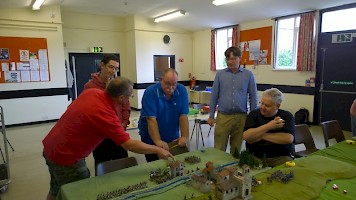
The rules were very interesting - while there were elements I’d seen before, what we had was no mishmash of rules, but a set carefully constructed by a professional historian. It vaguely reminded me of WRG 1685-1845, but with a far simpler (better) morale and order sequence.
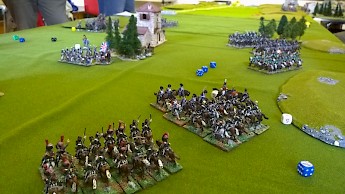
At the beginning of a turn, each side rolls initiative on 2D6 to see who goes first in that turn. Each brigade rolls an average dice (plus or minus the commander’s ability) to determine how many orders may be issued that turn. Each unit gets a number of dice for shooting (typically 3) with a success causing a casualty - there is individual casualty removal. The rules for cavalry were particularly good, with a unit testing to see if it pursues and how many men it loses to a reckless pursuit. Commanders are encouraged to keep their horse under control and rally them before pursuing (which leads to no losses but requires enough command points).
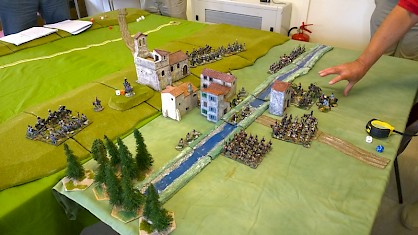
The game also has concealed units. Wellington’s men were (of course) deployed behind the hills, so the French trying to capture Fuentes had a nasty shock when the unaccompanied guns suddenly had several batallions of British infantry appear with them. Morale is taken on the unit losses, dice (typically 2 or 3D6) are rolled and as long as they roll greater than the number of losses, the morale test is passed. There were a few special rules, the British were better at shooting - which did take its toll on the French. The French had inferior horses, but had greater numbers in horse and infantry but not in artillery (for once).
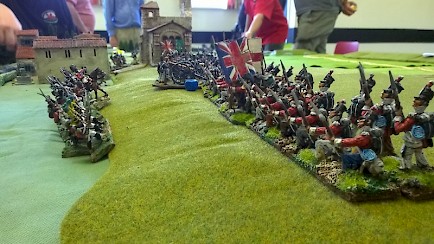
Another good feature was how commander casualties were arranged. If a general’s brigade has taken any casualties, roll a D6. On a 1, the General may be injured. He may have just had his horse shot from beneath him (reducing his command next turn), his ADC may have been killed (damned fine chap, but no effect in the game) or he may be mortally wounded (which happened to the British on more than one occasion). Replacements aren’t automatic, which left the British cavalry at one point leaderless for a couple of turns. Overall the game played very smoothy, admittedly with some guidance from Adrian. Even though I’d had no previous experience with the rules, I soon got the hang of them. So how did the game go?
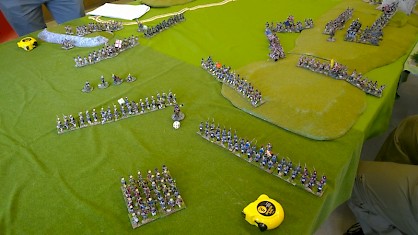
The French pressed their attacks on Fuentes while trying to outflank the British. This tactic almost worked, but the British won the initiative on a vital turn and managed to reform their line before it was outflanked. The French cavalry pushed its British counterpart from the table, but were pretty worn by the struggle. The French attacks against Fuentes turned into a bloodbath with high losses while the outflanking manoeuver fizzled out. Victory to the British! However it was a close call, particulalry considering each side had different victory conditions. Had the French destroyed two more British battallions, it would have been a draw.
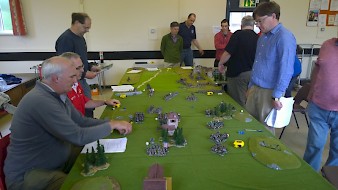
I had an excellent time. My heartfelt thanks to Adrian Goldsworthy and Glyn Williams for inviting me and to the rest of the Penarth and District Wargames Society for being very hospitable and making me feel most welcome. With luck, Adrian will flesh out his rules and we may see them in print. I’ll certainly look forward to playing them again.

